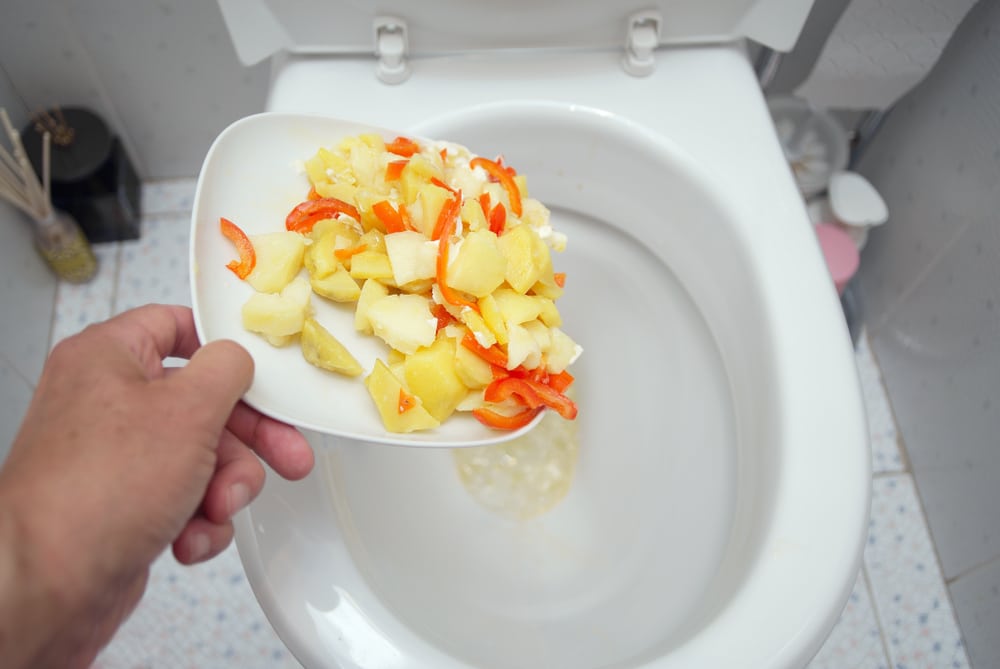Is it Permitted to Dispose of Food in the Toilet?
Is it Permitted to Dispose of Food in the Toilet?
Blog Article
Do you find yourself on the lookout for guidance about Think Twice Before Flushing Food Down Your Toilet?

Introduction
Many people are typically faced with the problem of what to do with food waste, specifically when it pertains to leftovers or scraps. One usual inquiry that develops is whether it's alright to flush food down the toilet. In this post, we'll explore the reasons people may take into consideration flushing food, the effects of doing so, and alternative techniques for appropriate disposal.
Reasons that individuals could take into consideration flushing food
Lack of recognition
Some people might not understand the possible damage caused by purging food down the toilet. They might erroneously believe that it's a safe technique.
Convenience
Flushing food down the commode might seem like a fast and very easy remedy to throwing away undesirable scraps, specifically when there's no neighboring trash bin readily available.
Laziness
In some cases, individuals may just choose to flush food out of large idleness, without considering the consequences of their activities.
Consequences of flushing food down the toilet
Ecological influence
Food waste that winds up in waterways can add to pollution and harm water ecosystems. Furthermore, the water used to purge food can strain water resources.
Plumbing issues
Flushing food can cause clogged up pipelines and drains pipes, creating pricey pipes repair services and inconveniences.
Sorts of food that need to not be purged
Coarse foods
Foods with coarse structures such as celery or corn husks can obtain tangled in pipes and cause obstructions.
Starchy foods
Starchy foods like pasta and rice can take in water and swell, resulting in obstructions in pipes.
Oils and fats
Greasy foods like bacon or food preparation oils must never ever be flushed down the bathroom as they can solidify and trigger blockages.
Appropriate disposal methods for food waste
Utilizing a garbage disposal
For homes equipped with waste disposal unit, food scraps can be ground up and flushed via the pipes system. However, not all foods are suitable for disposal in this way.
Recycling
Particular food packaging materials can be reused, reducing waste and minimizing environmental effect.
Composting
Composting is an environmentally friendly way to throw away food waste. Organic products can be composted and made use of to enrich soil for gardening.
The relevance of proper waste management
Decreasing environmental damage
Correct waste management methods, such as composting and recycling, assistance lessen air pollution and maintain natural resources for future generations.
Safeguarding plumbing systems
By staying clear of the method of flushing food down the commode, home owners can protect against pricey plumbing fixings and keep the stability of their plumbing systems.
Final thought
To conclude, while it may be appealing to purge food down the toilet for ease, it is very important to understand the prospective repercussions of this action. By embracing appropriate waste management practices and taking care of food waste properly, people can contribute to healthier plumbing systems and a cleaner setting for all.
FLUSH FOOD DOWN THE TOILET?
FLUSHING FOOD CAN CAUSE BLOCKED DRAINS IN YOUR HOME
All of the plumbing fixtures in your home are connected to the same sewer pipe outside of your home. This outdoor sewer pipe is responsible for transporting all the wastewater from your home to the Council sewer mains. Even small pieces of food that go down the kitchen sink can cause problems for your sewer. It should therefore be obvious that flushing larger bits of food, such as meat, risks a clog in either the toilet itself or the sewer pipes. Flushing greasy food is even more problematic because oil coagulates when it cools, coating the interior lining of your pipes.
THE TOILET IS NOT A BIN
Food isn’t the only thing that people shouldn’t be flushing down the toilet. People use the toilet to dispose of all kinds of things such as tampons, makeup wipes, dental floss, kitty litter and even underwear. Water goes to great lengths to educate residents about the high costs and stress placed on wastewater treatment systems simply from people flushing the wrong stuff down the toilet. It costs taxpayers millions of dollars each year, and homeowners thousands in blocked drain repairs.
FLUSHING FOOD IS A WASTE OF WATER
Flushing food is a waste of our most precious resource - water. In June this year Level 1 water restrictions were introduced to protect water supply from drought conditions. Much of New South Wales continues to be affected by prolonged drought with recent figures revealing up to 97 per cent of the state remains in drought. Depending on whether you have a single or dual flush toilet, every single flush uses between five and 11 litres of water. In the current climate this is a huge amount of water to be wasting on flushing food that should be placed in the bin (or better yet, the compost).
https://www.jabplumbingsolutions.com.au/blog/can-you-flush-food-down-the-toilet

We hope you liked our section on Is it safe to flush food (especially rice) down the toilet?. Thank you for spending some time to read through our content. Remember to take a moment to share this post if you enjoyed it. Thanks a lot for your time. Return soon.
Maintenance Sign-Up Report this page